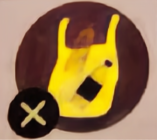It can be hard for one person to protect the environment by himself. If you teenagers want to do something, like stopping pollution or protecting wildlife, you can gather likeminded people in an environmental club.
Choose a cause. Some good ideas might be something like, “Save the whales!” But nothing says you can’t do more than one cause.
Find a clubhouse. Now that you have your club, you must find a place where all the members can get together to discuss your projects.
Decide on jobs. You can work as an activity organizer, a project manager or the president who decides all the meeting times, new members, meeting places, activities and projects. Each person can have a different job.
| A.Name your club. |
| B.Great minds think alike. |
| C.After all, saving the world is a big job. |
| D.Choose members to hold all the meetings. |
| E.Your club could do a different cause every month. |
| F.It could be in the woods, in the park or in the classroom. |
| G.But encourage all members to support each other’s work. |
相似题推荐
【推荐1】In the wake of President Trump's decision to remove America from the Paris Climate Agreement, you’d be forgiven for feeling a little pessimistic about the future of the planet.
With reports of huge cracks appearing in the Antarctic ice and the rising of some coastal areas, fears that preventing the two degree heating of the planet might be a pipe dream - our planet is increasingly getting worse. Everything looks and sounds grim.
Fortunately though, there are some good news stories on the horizon; with many of them coming from China. The country has been leading the way when it comes to ‘green living’ in recent years, with the government announcing it had completed the construction of the world's largest floating solar farm.
Now, in an attempt to restrain the production of toxic(有毒的) gasses, the country is continuing to pave the way with the construction of one of the world's first ‘forest cities’. Designed by Stefano Boeri, who you might remember also designed two vertical skyscraper 'Forests', the city is at present under construction in Liuzhou, Guangxi Province.
Once it is completed, the new city will reportedly host 30,000 people and - thanks to the abundance of trees and plants - will absorb almost 10,000 tons of CO2, 57 tons of pollutants per year and produce about 900 tons of oxygen annually.
The city will achieve these rather impressive figures thanks to roughly a million plants from over100 species, as well as 40,000 trees being planted in facades over almost every surface imaginable.
1. What is the main course of the phenomena mentioned in paragraph1?| A.The decision of the President Trump. | B.The big cracks in Antarctic ice. |
| C.The rising of the global temperature. | D.The nightmare of our planet. |
| A.It shows the talent of the designer - Stefano Boeri. |
| B.It is designed to control the emission (排放) of harmful gases. |
| C.It can absolutely lead to a better skyscraper. |
| D.It means that people will have a toxic place to live in. |
| A.The benefits of the construction of the city. | B.The good life experience of the locals. |
| C.The green surface of our planet. | D.The pollutants caused by the CO2. |
| A.Anew trend of living in China. |
| B.Different lifestyles in different places of China. |
| C.Conflicts between people and the environment. |
| D.The efforts made by China to change the climate change. |
【推荐2】For more than 50 years, seawater has flowed through the Hong Kong’s toilets. And in 2013, Hong Kong built a system that used seawater to cool part of the city. The system sends cold seawater to a factory with heat exchangers. The seawater takes in heat to cool pipes full of circulating (循环的) water. That cooled water then flows into buildings to cool rooms. The slightly warmed seawater is sent back to the ocean. Known as district cooling, this type of system tends to use far less energy than typical air conditioners.
How much water and energy had this strategy saved Hong Kong? And why weren’t other coastal cities doing this? A team at the Hong Kong University of Science and Technology set out for answers. They focused on Hong Kong and two other big coastal cities: Jeddah, Saudi Arabia, and Miami, Fla. The idea was to see what it might look like if all three adopted city-wide saltwater systems.
All three places would save lots of fresh water and energy, the researchers found. These savings came from the more efficient saltwater air conditioning. Though costly to build, saltwater-cooling systems could pay off in the long run for many cities.
The researchers figured out how emissions (排放) of greenhouse gases would drop if each city instead used seawater for cooling and flushing (冲刷). Next, they studied how much pollution would be created to build the new system. They compared these results to see how emissions of climate-warming gases would change for each city.
Hong Kong would see the biggest cut in greenhouse gases if the system were expanded to the whole city. It could drop by some 250,000 tons each year. Miami could see a drop of around 7,700 tons of carbon pollution per year. Saltwater cooling would cause more planet-warming gases in Jeddah than it would save. The reason: Jeddah’s unplanned urban expansion and all the pipes that would be needed to service it. The pollution coming from building such a large system would be higher than what the system would save.
1. What can seawater do in Hong Kong’s district cooling system?| A.It is used to flush all of the toilets. | B.It runs into buildings to cool rooms. |
| C.It circulates in pipes to warm the air. | D.It absorbs heat to cool the water in pipes. |
| A.To test if saltwater-cooling systems are fit for all coastal cities. |
| B.To find ways to build more efficient saltwater-cooling systems. |
| C.To popularize Hong Kong’s energy reduction measures. |
| D.To apply Hong Kong’s experience to Jeddah and Miami. |
| A.Supportive. | B.Unclear. |
| C.Mixed. | D.Opposed. |
| A.Kill two birds with one stone. | B.There is no one-size-fits-all way. |
| C.Two wrongs don’t make a right. | D.One man’s fault is another man’s lesson. |
【推荐3】Doing a bit of research before you sort your trash can make all the difference. Recycling rules differ from one city to another. Here are a few ways to help you do it better.
■Don’t put your recyclables in a plastic bag

It’s not that we don’t have the technology to recycle plastic bags, but it is risky to recycle them because the bags are so lightweight and flexible that they end up getting caught in the recycling equipment!
Your best option is to bring your plastic bags to a drop-off recycling center where it has the right equipment to recycle them.
■You can recycle plastic caps together with bottles

In the past, we were told to separate the cap from the bottle when recycling. Bottles are made from # 1plastic while their caps #5 plastic. They are at different melting temperatures and need to be processed separately. But now, advanced machines have made it easier to separate bottles and caps.
At present, what you need to do is leave the plastic bottle cap on the bottle and ensure the bottle is free of all liquids before throwing it into the bin.
■You can’t recycle a pizza box

Although cardboard itself is recyclable, pizza boxes are not. Why? It all comes down to the oil. When you place oily cardboard into a recycling bin, you run the risk of polluting clean, recyclable things. And an entire pack of polluted recyclables can cost more.
But if only a small part of your box is oily, pull that piece off the box and throw just that piece away while the rest of the box can then be recycled.
1. Why can’t we place recyclables in a plastic bag when sorting trash?| A.It will cause more pollution. |
| B.The equipment may fail to work. |
| C.Plastic bags are not tough enough. |
| D.No technology is available to recycle plastic bags. |
| A.Collect them into a specific bin. | B.Put them into different machines. |
| C.Separate the caps from the bottles. | D.Empty the bottles and re-cap them. |
| A.The oil on it. | B.Lack of proper facilities. |
| C.Its harmful materials | D.Different melting temperatures. |



